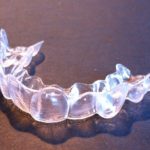
Invisalign® launched in 1997 and is one of a number of clear orthodontic aligners systems that are currently available. The clinical effectiveness of these systems is controversial and while there is a broad range of literature on these appliances formal evaluation of their clinical performance has been less frequent.
The aim of this review was to assess the available evidence regarding the clinical effectiveness of the Invisalign® system.
Methods
The Cochrane Oral Health’s Trials Register, Cochrane Central Register of Controlled Trials (CENTRAL) Medline, Embase, ClinicalTrials.gov, the National Research Register, and Pro-Quest Dissertation Abstracts and Thesis databases were searched with no language restrictions. Randomised clinical trials (RCTs), controlled clinical trials (CCTs), and prospective and retrospective studies were considered.
Study selection, data extraction and risk of bias assessment was carried out independently by two reviewers. Risk of bias for RCTs was assessed using the Cochrane tool with an adapted scoring system being used for prospective and retrospective studies. The overall quality of evidence was assessed using the Grading of Recommendations Assessment, Development and Evaluation (GRADE) approach. A narrative summary of the findings was presented because of the heterogeneity of the studies.
Results
- 22 studies (3 RCTs, 8 prospective and 11 retrospective) were included.
- 3 RCTs were considered to be at low risk of bias, 3 prospective studies at moderate risk and 5 at high risk and 10 out of 11 retrospective studies also at moderate risk with 1 at high risk.
- Sample sizes ranged from 6 to 152 and patients ages ranged from 13 – 61 with an average of 30 years of age.
- A narrative summary of the findings was provided as no quantitative analysis was possible due to marked heterogeneity of the included studies.
Conclusions
The authors concluded: –
Although this review included a considerable number of studies, no clear clinical recommendations can be made, based on solid scientific evidence, apart from non-extraction treatment of mild to moderate malocclusions in non-growing patients. Results should be interpreted with caution due to the high heterogeneity.
Comments
While a broad ranging search for evidence to address this question has been undertaken the quality of the available evidence is very limited. Although the quality of the RCTs has been assessed using the Cochrane tool I do not agree with the assessment that all three RCTs are at low risk of bias, as the paper indicates that two of the RCTs had missing outcome data and these two studies did not perform blinded outcome assessment so at best these two RCTs should have been assessed as at unclear risk of bias. It would also have been helpful if the validated Newcastle-Ottawa Scale or ROBINS-I tool (Risk Of Bias In Non-randomized Studies – of Interventions) had been used for the non-RCT study designs. It is also interesting to note that the bulk of the available studies were conducted in adult patients rather than adolescents where the majority of orthodontic treatment is traditionally provided.
These was marked variation in the assessed outcomes in the included studies with several studies comparing outcomes against ‘virtual models’ consequently only a narrative summary of the findings was presented. While the authors make a number of conclusions related to effects produced by Invisalign® the very limited quality of the evidence means these should be interpreted very cautiously. A broader review of clear aligners by Zeng et al in 2017 (Dental Elf- 5th Jun 2017) also highlighted a general lack of evidence for the effectiveness of clear aligners.
Links
Primary Paper
Papadimitriou A, Mousoulea S, Gkantidis N, Kloukos D. Clinical effectiveness of Invisalign® orthodontic treatment: a systematic review. Prog Orthod. 2018 Sep 28;19(1):37. doi: 10.1186/s40510-018-0235-z. Review. PubMed PMID: 30264270; PubMed Central PMCID: PMC6160377.
Other references
Dental Elf- 5th Jun 2017
Clear aligners: little evidence available to support their effectiveness
Picture credits
By Smikey Io – Own work, CC BY-SA 3.0,

[…] Invisalign®: very low quality evidence for effectiveness […]